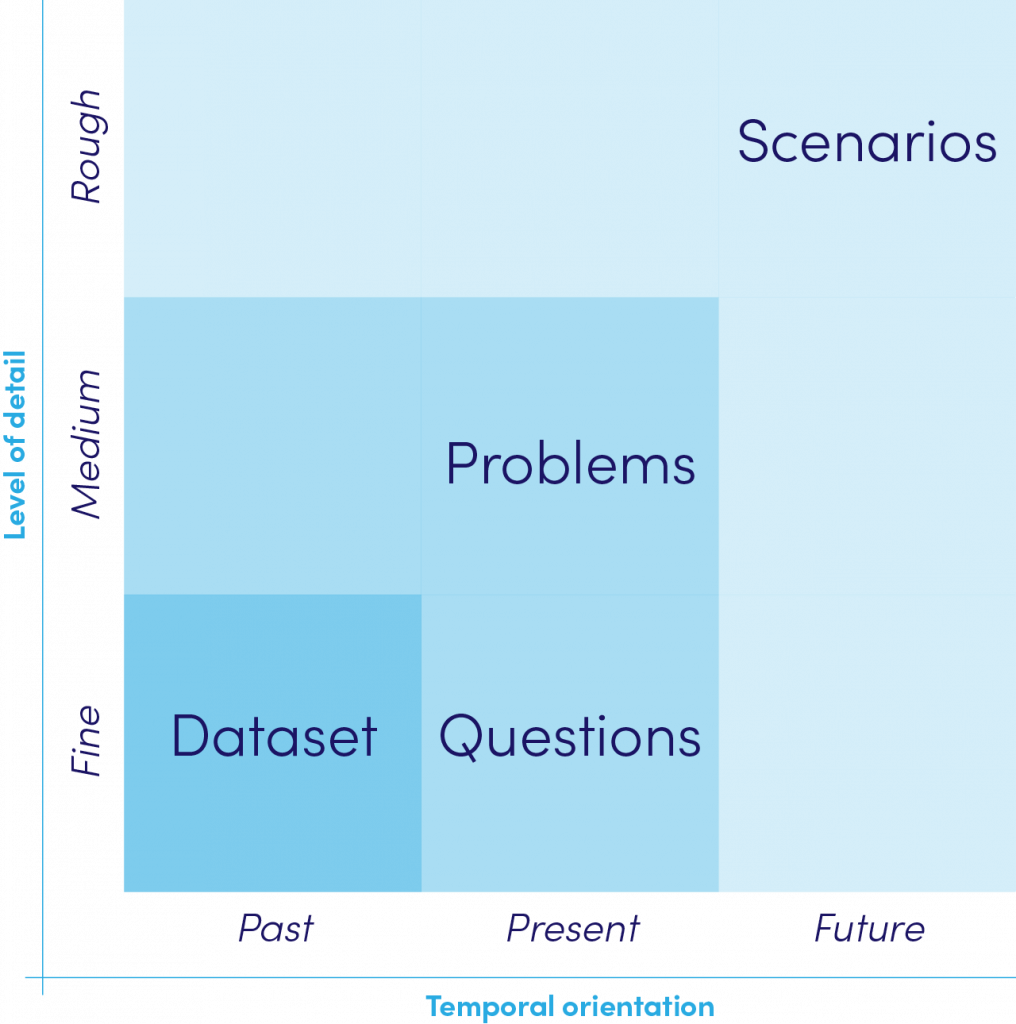Action-based learning (also called learning-by-doing) is a valuable theory for educators and researchers in education and refers to “all learning that is orchestrated by some activity on the part of learners” (Naidu & Bedgood, 2012). Naidu & Bedgood (2012) state that legitimate learning actions may vary from real participation by learners (in building, creating, or drawing something) to learners watching a video clip that is later examined, reflected on, or planting a seed for a subsequent decision-making process.
While each action-based learning type has a distinctive focus or perspective, each starts from a defined problem or learning goal which has to be solved or achieved (Naidu, 2010). When we experience an event, we can learn from that event retrospectively, concurrently, and prospectively, i.e.:
- Learning from the event while it is happening;
- Learning from an event in the past, when thinking about it later;
- Learning more about an event in the past, when thinking more about it;
- Reinterpreting an event from past in a different way, in the light of further experience(s);
- Analysing future scenarios (Beard & Wilson, 2013).
In order to better understand and catch the differences between the four action-based learning methodologies addressed by the project (inquiry-based learning, problem-based learning, scenario-based learning, dataset-based learning), we developed, on the basis of the existing above-mentioned literature, the framework below.

The entities at the basis of the four methodologies (i.e.: questions for inquiry-based learning, scenarios for scenario-based learning, problems for problem-based learning and datasets for dataset-based learning) could be described by using two dimensions: the granularity (that is the level of detail: rough, medium or fine) and the temporal orientation (future, present or past). The scenarios have a rough granularity, with a low level of detail, and are placed in the future (they are, in fact, schematic configurations of probable/hypothetical situations). The problems, on the other hand, have a finer (medium) granularity than scenarios and are placed in the present, since they are deterministic and not probabilistic. The problems could be solved by decomposing the problem into a series of questions, so the questions have the same temporal orientation as the problems, but they have a finer granularity. Finally, the datasets have a granularity similar to that of the questions, but temporally they are placed in the past, because they are collections of data from the past.
This is the methodological framework applied in the eSTEM project. The project addresses four methodologies covering different areas of the proposed framework, so it could be a good test for applying our approach to methodologies characterized by different granularity and temporal orientation.
Bibliography
- Barron, B., & Darling-Hammond, L. (2008). Teaching for meaningful learning: A review of research on inquiry-based and cooperative learning. Powerful Learning: What We Know About Teaching for Understanding (pp. 11-70). San Francisco, CA: Jossey-Bass.
- Beard, C., & Wilson, J. P. (2013). Experiential learning: A handbook for education, training and coaching (p. 343). London, UK: Kogan Page Publishers.•Erol, S. & Jäger, A. & Hold, P. & Ott, K. & Sihn, W. (2016). Tangible Industry 4.0: a scenario-based approach to learning for the future of production.
- Jones, A. T., Simon, S. A., Black, P. J., Fairbrother, R. W. & Watson, J. R. (1992). Open work in science Development of investigations in schools (Hatfield, Association for Science Education).
- Markova, T., Glazkova, I., Zaborova, E. (2017). Quality issues of online distance learning. Procedia-Social and Behavioral Sciences. 237: 685-691.
- Naidu, S. (2010). Using scenario-based learning to promote situated learning and develop professional knowledge. In E. Errington (Ed.), Preparing graduates for the professions using scenario-based learning, (pp. 39-49). Mt Gravatt, QLD, Australia: Post Pressed.
- Naidu, S., & Bedgood, D. R. (2012). Action-based Learning. In N. M. Seel (Ed.), Encyclopedia of the Sciences of Learning (pp. 75–77).
- Richardson, J.C., Maeda, Y., Lv, J., Caskurlu, S. (2017). Social presence in relation to students’ satisfaction and learning in the online environment: A meta- analysis. Computers in Human Behavior. 71: 402-417